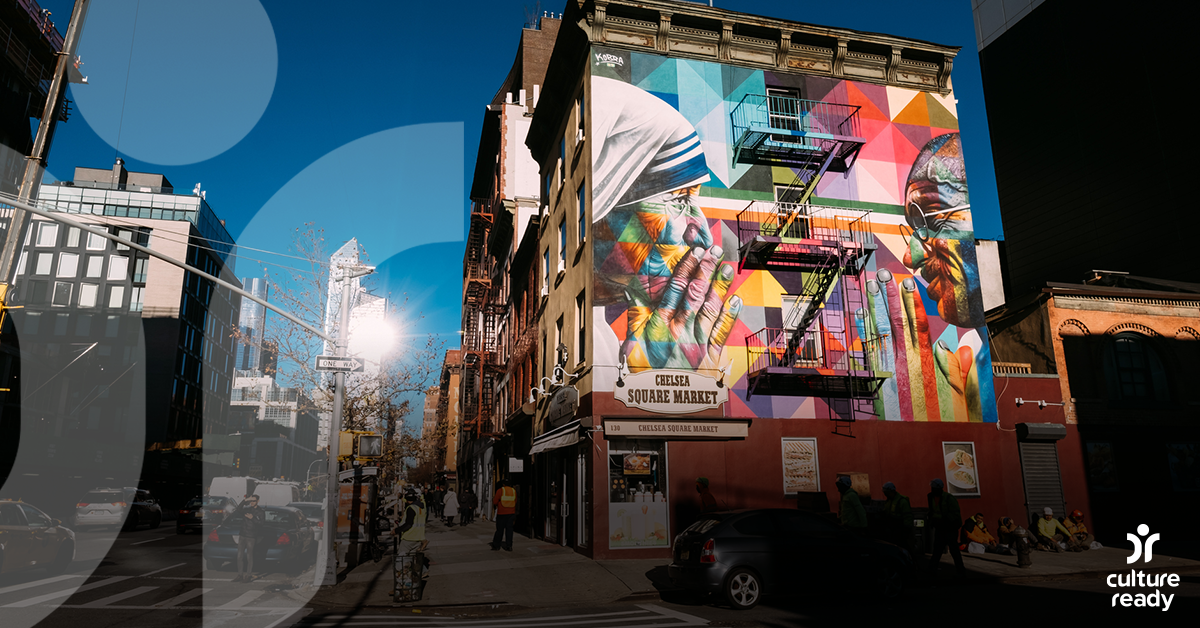Brazilian Street Creates a Kaleidoscope of World Cultures
Seen in more than 40 cities from Amsterdam to Mumbai, the Brazilian street artist Kobra’s kaleidoscope-like murals celebrate peace, tolerance, creativity, and the diversity of people across the globe. Through a technique that involves repeating squares and triangles in bold, vibrant colors, the artist immortalizes peacemakers like Gandhi and Martin Luther King, Jr., and artists such as Frida Kahlo and David Bowie.
“Etnias”(Ethnicities), which lined Olympic Boulevard at the 2016 Summer Olympic Games in Rio de Janeiro, depicts native peoples from every continent — the Huli (Oceania), the Mursi (Africa), the Kayin (Asia), the Supi (Europe) and the Tapajós (Americas). It took over two months, 3,000 spray cans and 2,500 liters of paint to create the 32,000 square foot mural, then recognized by Guinness World Records as the largest ever created by a single artist.
In Amsterdam, a giant mural of Holocaust victim Anne Frank on the welding hangar of a former shipyard is a reminder of the Dutch teenager’s courage while hiding from the Nazis from 1942 to 1944.
Buildings across New York City serve as a canvas for 18 murals that pay homage to freedom and many of the artists Kobra admires, from a New York City Fire Department firefighter during 9/11 to Jean-Michel Basquiat. Covering the high school Basquiat attended, the largest of the “Cores Pela Liberdade” (Colors for Freedom) series, “Ellis Island,” represents immigrants from several different ethnicities who left their homelands in search of a better life.
The murals’ “goal is an urge for peace for all kinds of social justice, against racism, against violence,” Kobra wrote in an Instagram post.
Similarly, his “Olhares da Paz” (Looks of Peace) in Sao Paolo celebrates Nobel Peace Prize winners such as Albert Einstein, Nelson Mandela, Malala Yousafzai, Mother Teresa of Calcutta, and the Dalai Lama.
Mother Teresa appears facing Gandhi in another of Kobra’s murals titled “Tolerância” (Tolerance). According to the self-taught muralist, the work “should act as an invitation to reflection: face to face, that different people make dialogue the necessary prayer for a culture of peace.”
Despite their larger-than-life size, painting the murals isn’t the most time-consuming part of the process. Kobra spends months researching his subjects to come up with the concepts and create the canvas prototype for the final mural.
To learn more about Kobra visit his website.
